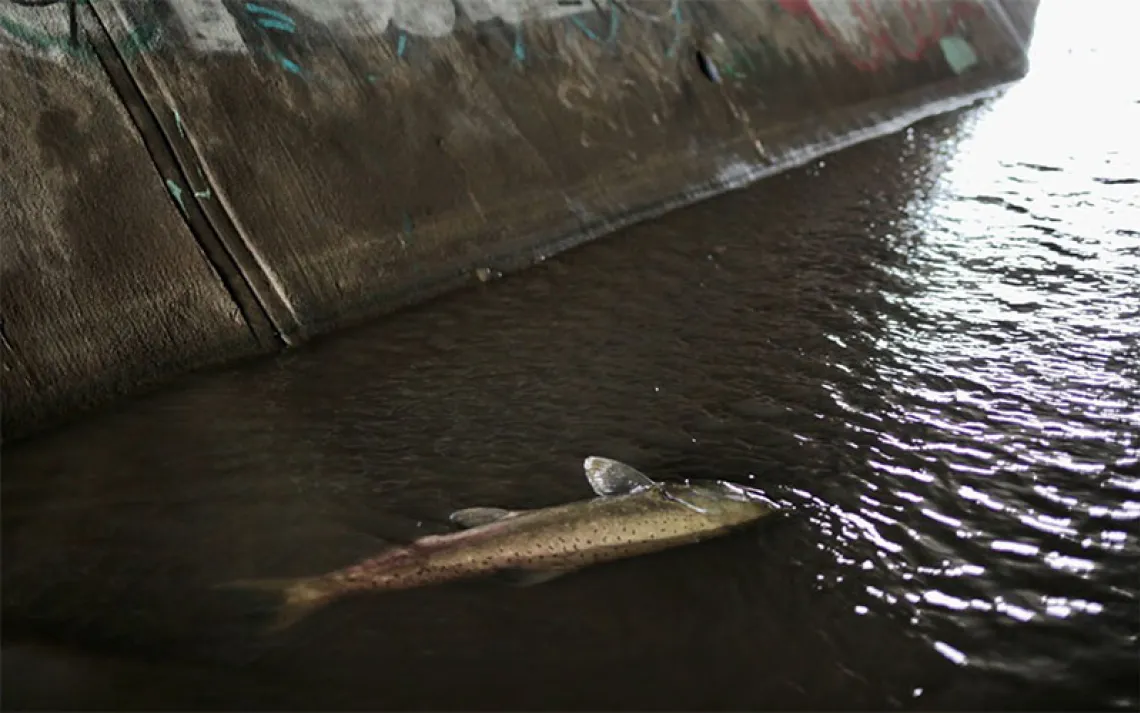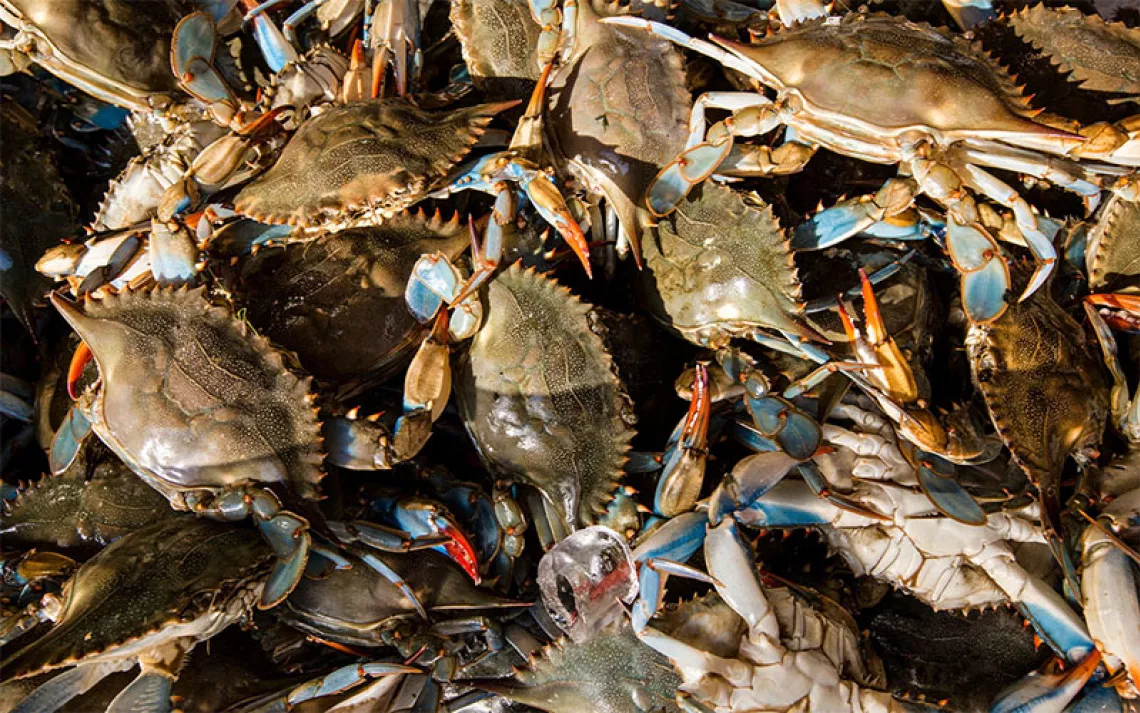Giving the Right of Way to Wildlife
How “road ecology” is providing new avenues for animals to roam

Photo by jewhyte/iStock
Every year, more than 12.5 million people travel through Great Smoky Mountains National Park, the most visited national park in the United States. That includes a daily average of 26,000 vehicles that zoom down the 28 miles of I-40 that bisect the park’s Pigeon River Gorge region in Tennessee and North Carolina. The landscape that human visitors come to for wild escapes and forested adventures is also home to large animal species including black bear, elk, and white-tailed deer. All too often, the interests of those human visitors and the needs of the local wildlife collide—literally.
In a typical year, dozens of black bears are struck by motorists in the area. So, too, are elk and deer. The collisions in Great Smoky Mountains National Park are just one part of a larger, national problem. At least 1 million animals are killed by cars each year, and an estimated 200 human lives are lost in such crashes. Wildlife-automobile collisions contribute to some $12 billion in damages annually.
Now, researchers, ecologists, biologists, and transportation departments are realizing how man-made thoroughfares bisect animals’ natural habitats and contribute to wildlife collisions. In response, federal, state, and local agencies nationwide are working with conservation organizations to construct wildlife-friendly infrastructure. Land bridges, under-highway culverts, fencing, and other strategies are helping to keep wildlife off roads and still allow them room to roam.
The collaborative effort and research focused on providing safe wildlife passage on I-40 at the Pigeon River Gorge is just one of the most recent examples of work aimed at creating wildlife-friendly infrastructure—and it’s far from the only one. In Montana, a project on a stretch of US 93 on the Flathead Indian Reservation between Evaro and Polson is one of the most extensive wildlife-sensitive highway design efforts to date. Colorado has some 70 successfully completed wildlife mitigation projects, with one more currently underway that will consist of underpasses, overpasses, and fences along US 160 between Durango and Pagosa Springs. Wyoming built a series of crossings along a section of Route 191 in the Pinedale area. Utah boasts more than 50 wildlife-migration structures, many of which are large culverts, while Nevada installed nine crossings just on I-80 and US 93 in the northeastern part of the state. Florida has more than 50 underpasses to facilitate the safe movement of wildlife.
The construction of all this new wildlife-friendly infrastructure has been informed by a relatively new term in the conservation handbook: “road ecology,” which is the study of how plant and animal life is intertwined with roads and highways and how the natural world is affected by these asphalt routes.
“We now know how detrimental roads are to wildlife,” explains Liz Hillard, a wildlife scientist with Wildlands Network who’s intimately involved with the Smokies Safe Passage project along I-40 (the organization is the coalition’s fiscal sponsor). “When these interstates were built in the '60s and '70s, wildlife wasn’t considered.”
That’s beginning to change. “In the last several years we’ve seen a major shift in how we think about these sorts of systems,” says Tony Cady, planning and environmental manager at the Colorado Department of Transportation. He works closely with many state organizations to get wildlife-collision mitigation projects approved and built and has seen a major uptick in their acceptance and popularity across the country.
In the 1970s and '80s, there were barely a handful of wildlife crossings across the nation. Today, there are more than a thousand overpasses, underpasses, culverts, and exclusion fencing in the United States. While many routes focus on providing safe passage for large animals like elk, bears, and deer, others—including a few in Vermont—cater to smaller creatures such as snakes, salamanders, and turtles. Researchers have found that all kinds of animals end up utilizing these crossings—from bobcats to coyotes, otters to moose.
“Connected landscapes are fundamental for the ability of nature to thrive and evolve,” says Nikki Robinson, North Carolina projects manager at Wildlands Network.
To thrive, animals need to be able to wander to find food, mates, and new habitats. When a species is sequestered to one small region, its members are forced to choose mates from a narrow gene pool, resulting in genetic isolation that makes them susceptible to disease at best and a higher risk of isolated extinction at worst. Food availability also plays a part in wildlife migrations, as animals sometimes have no choice but to cross if resources have been depleted on one side of a busy highway. Studies show that during years when food is scarce, bear fatalities rise as the animals roam farther, resulting in maybe the most evident side effect of these panicked crossings: roadkill.
And it’s not just animal deaths that are a problem; the human impact of wildlife collisions are also significant. According to a North Carolina Department of Transportation and Safety Division study, between 2017 and 2019, there were 56,868 wildlife-vehicle collisions, more than 2,800 human injuries, five human fatalities, and $156.9 million in property damage. In Colorado, wildlife-vehicle collisions resulted in some $80 million in financial impact. In that state alone, one in five people will have a collision with a deer at some point in their driving life.
These types of wildlife migration projects don’t happen overnight, though. Some have been in the works for decades, slowly pushing through various stages of research or approval or funding, each involving a significant amount of multi-organization effort. For example, almost 20 federal, state, tribal, and nongovernmental organizations are collaborating on the Smokies Safe Passage project.
Some of the funding for these multimillion-dollar projects comes from local departments of transportation. But that’s rarely enough, which often requires tribal communities, foundations, and NGOs to raise money to help pay for the projects. Together, these coalitions then have to design plans and get them approved, acquire land if necessary, and raise money and public support for the projects—all before the actual construction can begin.
“It really is a partnership,” says Bill Holman, North Carolina state director for the Conservation Fund, which helps government agencies acquire land for conservation projects like public parks, forests, wildlife refuges, and wildlife corridors. “Different agencies really play different and important roles.”
“It really takes the entire community,” Hillard says. After all, “We’re all about the same thing: protecting the biodiversity and the conservation of our region. We also want it to be safe for drivers out there.”
Once these projects are completed, do they work? According to a study by ARC Solutions, an organization that promotes animal crossings, they are amazingly effective: “Collisions involving wildlife dropped 88 percent after a set of overpasses and underpasses was built for elk and moose along Highway 9 in Colorado, and 90 percent after an underpass for mule deer opened beneath Highway 97 in Oregon.”
“Restoring historic wildlife corridors is a banner example of how we can be good stewards of the land,” Robinson says. “Ensuring safe passage across busy highways is going to benefit wildlife and public safety in so many ways. It’s just a win-win.”
This article has been updated since publication.
 The Magazine of The Sierra Club
The Magazine of The Sierra Club



